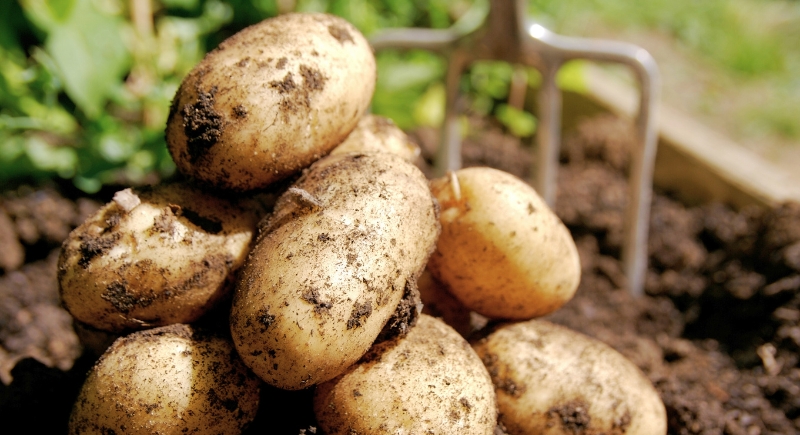Why You Should Never Eat a Potato That Has Turned Green
Potatoes with a hint of green are oddly suspicious and not at all what safe-to-eat potatoes should look like. It sits there in the pantry, looking harmless enough, but that color shift isn’t just weird, it’s a signal. Many people brush it off and toss it into a pot anyway, unaware that the green shade might be whispering a warning their stomach would rather not test. Before you mash, fry, or roast, it’s worth knowing why that innocent-looking spud can turn into a small-time villain in your kitchen and your body.
What Causes the Green Color
When potatoes are left in the light too long, they begin producing chlorophyll, the same pigment that makes plants green. Chlorophyll itself isn’t the problem, but its presence means something else is happening beneath the skin.
The potato also starts forming glycoalkaloids, naturally occurring toxins called solanine and chaconine. Normally, these compounds are found in small, harmless amounts, but light, damage, and age can cause levels to spike. So that green hue isn’t dangerous on its own, but it signals that the potato might be brewing a chemical defense you don’t want to taste.
The Risks of a Green Potato

Image via iStockphoto/DINphotogallery
Solanine and chaconine aren’t words most people think about while cooking, but these compounds pack a punch if you eat too much of them. They can interfere with your digestive and nervous systems, leading to nausea, vomiting, stomach cramps, headache, and even confusion in severe cases. While it takes a large amount to cause serious harm, a badly green or sprouted potato can contain enough toxin to make you feel miserable. Children are especially sensitive due to their smaller body size, which means even a smaller serving could cause symptoms.
How Much Is “Too Much?”
When a potato turns green or is stored improperly, glycoalkaloid levels can climb fast. Tasting a green potato also provides a natural warning system; bitterness usually signals high solanine. If your cooked potato burns your throat or tastes unpleasantly bitter, don’t push through it. The universe just handed you a polite “don’t eat this” message.

Image via iStockphoto/johnnyscriv
If you’ve found a green potato and think peeling will fix it, there’s some truth to that, but only to a point. Solanine and chaconine tend to concentrate near the skin and the eyes, so peeling and cutting away green areas can help. However, if the greening runs deep or the whole potato looks tinted, it’s not worth saving. Cooking doesn’t destroy these toxins either, so boiling, frying, or baking won’t make a green potato safe again. The smarter move is to store your potatoes in a cool, dry, dark place, around 45 to 50 degrees Fahrenheit, and away from direct light or heat to stop greening before it starts.
When it comes to potatoes, trust your eyes, your taste buds, and your common sense. Check your spuds before cooking and toss any that look too green, soft, or sprouted. If the green is minor, trim it off generously, but if the potato looks like it’s trying to audition for a frog costume, it’s time to let it go.
Keeping your potatoes in a dark pantry or paper bag helps extend their life and flavor. And if you’re cooking for kids, play it safe and pick only firm, unblemished potatoes. It’s certainly better to lose a potato than to try to win a stomachache.